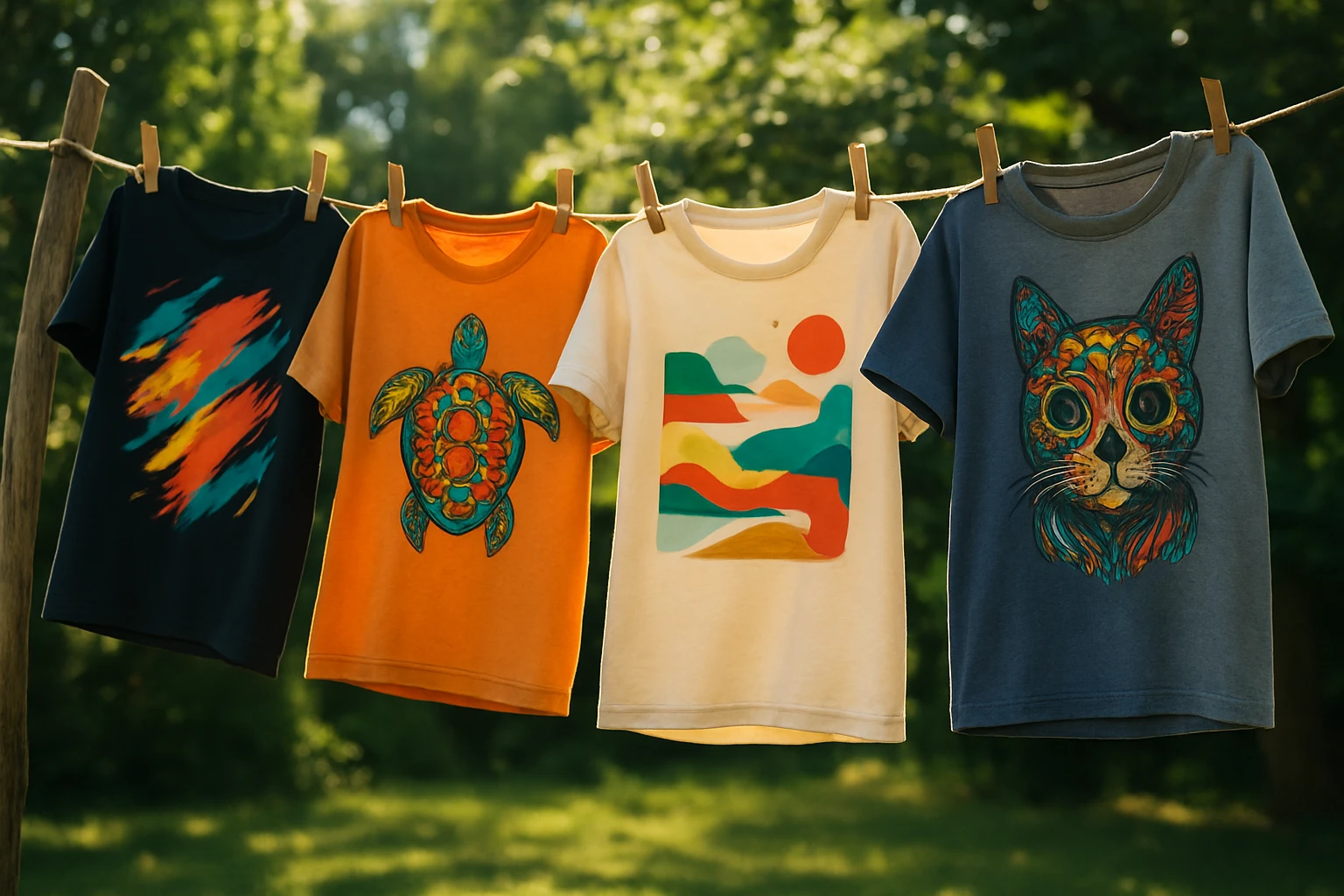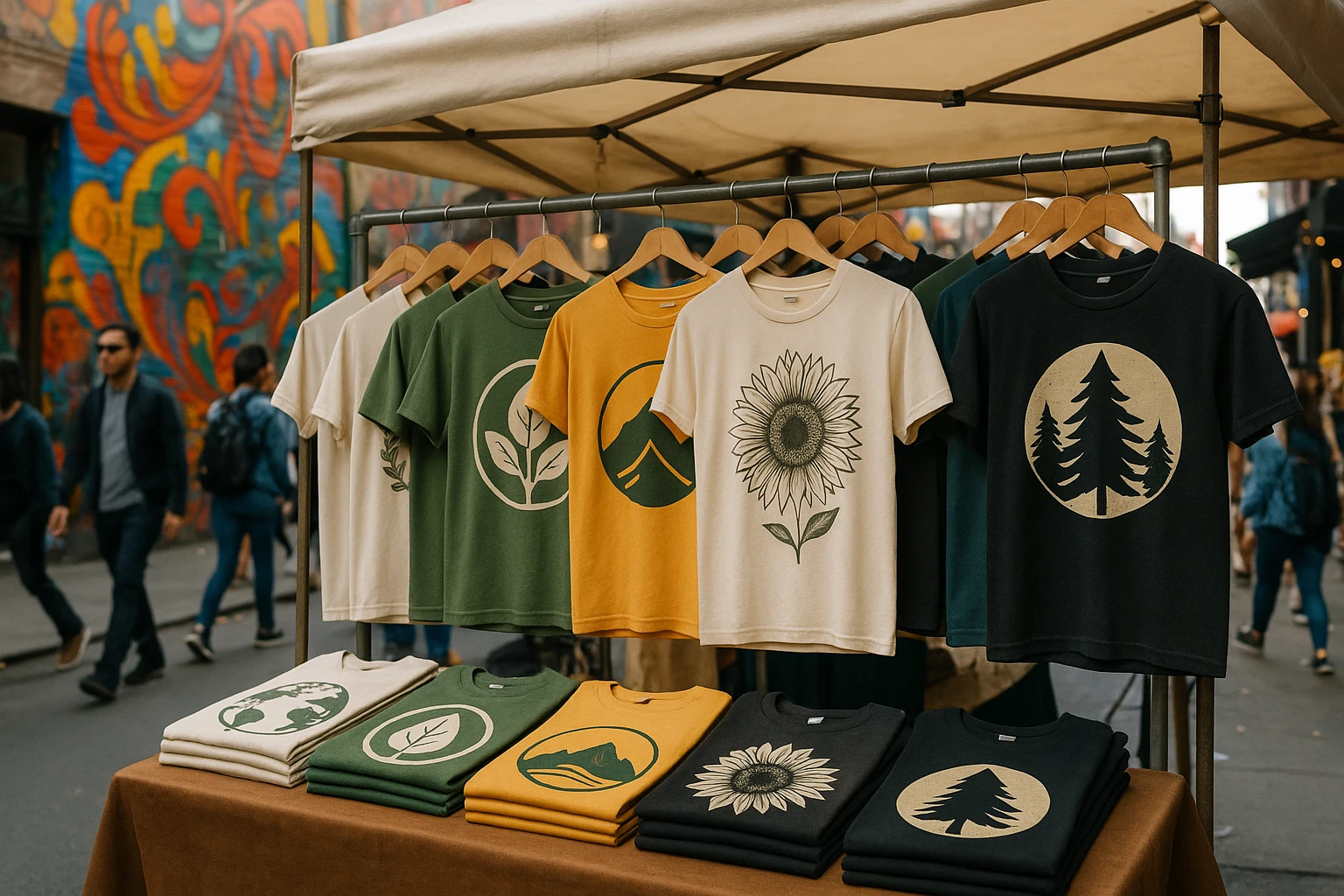
The Ultimate Guide to Graphic Tees: Trends, Styles, and Tips

Introduction
Imagine scrolling through your wardrobe and instantly finding a canvas of self-expression that speaks louder than words—this is the power of graphic tees. Often overlooked as mere casualwear staples, these garments have evolved into dynamic platforms where art, identity, and culture intersect. In this introduction, we’ll set the stage for a compelling exploration of graphic tees, shedding light on why they’re far more than just pieces of fabric—and why marketers, designers, and brands need to pay attention.
The Cultural Canvas
Graphic tees offer a unique medium through which people broadcast their values, affiliations, and moods. Whether someone wears a vintage band design, a slogan that captures their worldview, or a minimalist illustration, these shirts serve as a walking billboard for personal expression. In fact, the global graphic tees market is growing—valued at approximately $5.46 billion in 2024 and expected to climb to $5.78 billion in 2025—demonstrating a rising demand for apparel infused with meaning Wise Guy Reports.
Economic Momentum and Market Potential
The surge isn’t just cultural; it’s commercial. For instance, the broader T‑shirt market, which encompasses printed designs, was estimated at $28.20 billion in 2024 and is projected to grow to $29.41 billion in 2025, with around 38% of purchases driven specifically by graphic and printed options Global Growth Insights. These figures underscore the earning potential and sustained relevance of expressive apparel.
Why This Matters to Your Strategy
Understanding the significance of graphic tees isn’t just about fashion—it’s a strategic advantage. For content creators targeting Gen Z or Millennials, tapping into the emotional resonance of graphic design can fuel engagement and loyalty. For independent artists, the shirt becomes a mobile gallery, while retailers can differentiate themselves by curating niche or limited-edition collections that reflect authentic cultural moments or trends.
As you continue through this article, you’ll uncover actionable insights: how to design with intention, choose sustainable practices, and leverage graphic tees as brand expression. This section laid the groundwork by highlighting both the cultural weight and economic force behind these popular apparel pieces—making a clear case for their strategic importance in today’s fashion and marketing landscapes.
Delving Deeper into the Market Momentum
Building on the cultural and economic foundation established earlier, let’s now explore the commercial dynamics fueling modern consumer interest. The broader t-shirt market in the U.S. is projected to generate approximately US$11.19 billion in revenue in 2025, maintaining a steady annual growth rate of around 3.2% through 2029—an indication of robust, sustained demand Statista. Within this landscape, demand for vintage-inspired and expressive designs is especially high, mirroring consumer desire for individuality and nostalgia through graphic tees Statista.
Global Growth Trajectory and Customization Trends
On a global scale, the t-shirt market is valued at approximately US$185.2 billion in 2024 and is projected to reach US$221.5 billion by 2032, driven in part by a surge in branded and customized apparel along with digital sales channels PR Newswire / Credence Research. The custom-printing segment, in turn, is expanding even more rapidly: from US$8.17 billion in 2024 to a projected US$9 billion in 2025, then rising to US$13.55 billion by 2029—growth fueled by event merchandise, fandom, athleisure, and digital-on-demand capabilities GlobeNewswire / Research and Markets.
From Fast Fashion to Sustainable Expression
Emerging trends reinforce that many shoppers—especially younger generations—gravitate toward affordable yet expressive apparel. One analysis finds that 38% of t-shirt purchases are driven by graphic and printed designs, while 33% of buyers are actively seeking sustainable options Global Growth Insights. This dual demand underscores a key opportunity for brands: offering visually compelling apparel that also aligns with ethical production values.
Actionable Insights for Brands and Designers
-
Use market data to inform strategic design: lean into nostalgia, pop culture, or cause-driven motifs that resonate emotionally with core audiences.
-
Embrace on-demand and digital printing technologies to offer limited runs, custom designs, or fast drops—aligning with consumer desires for exclusivity and speed.
-
Highlight sustainable materials and production practices in marketing. With one-third of consumers prioritizing eco-conscious options, transparency becomes a differentiator that builds trust.
As we move forward, the next section will examine how to design with intention—capturing the intersection of visual storytelling and production strategy to deliver graphic tees that stand out, scale, and endure.

A vibrant collection of graphic tees displayed on a rustic wooden clothesline in a sunlit backyard, each shirt showcasing unique, colorful designs ranging from abstract art to cultural symbols, fluttering gently in the breeze against a backdrop of lush greenery.
Trends and Innovations in Graphic Tees
Graphic tees have become not only a wardrobe staple but also a canvas for personal expression and innovation. The blend of art, technology, and fashion has paved the way for exciting trends in the industry. In particular, sustainable practiceshave gained traction. Brands like Patagonia, for instance, have adopted eco-friendly materials and ethical production methods, appealing to environmentally conscious consumers.
The rise of digital printing technology is another critical innovation driving uniqueness in graphic tees. Unlike traditional screen printing, digital printing allows for more intricate designs with a broader color palette, enabling more personalized and detailed artistic expression. This shift not only enhances the quality of graphic tees but also reduces waste, making it a more sustainable choice for manufacturers.
Cultural Influences and Artistic Collaborations
Graphic tees often reflect cultural and social movements, serving as a platform for artists and designers to showcase their work. Collaborations between clothing brands and artists have become increasingly popular. For example, the partnership between Uniqlo and contemporary artists has resulted in collections that bring art from the gallery to everyday fashion. Consumers are drawn to these tees as they offer a unique opportunity to wear and support art they love.
Furthermore, pop culture icons are frequently featured on graphic tees, allowing fans to feel a closer connection to their favorite celebrities and fictional characters. This trend underscores the tees' role in identity expression and the broadening demographic appeal.
Technology-Driven Marketing Strategies
In an era dominated by digital marketing, social media platforms are playing a significant role in the promotion of graphic tees. Influencers and fashion bloggers are often seen sporting these tees, driving trends through platforms like Instagram and TikTok. According to Statista, approximately 82% of the US population had a social media profile in 2021, highlighting the broad reach of these platforms for fashion brands.
Moreover, customization options offered through online platforms have made it easier for consumers to design their graphic tees, further personalizing their fashion choices. Websites like Redbubble enable artists and consumers alike to create and sell unique designs, fostering a community-centric approach to fashion.
These trends in graphic tees illustrate a dynamic interplay of culture, technology, and marketing, making them a continually evolving and exciting aspect of the fashion world.
Design Innovation and Market Dynamics
The graphic tee landscape continues to transform, driven by evolving consumer preferences and technological advancements. In 2025, bold and oversized visuals are taking center stage, with designers embracing chaotic, pop-art inspired prints that command attention, offering a refreshing contrast to the minimalist aesthetic that previously dominated the market. Typography remains influential too, with statement fonts—often aligned with socially conscious messaging—adding personality to wearable designs polifino.co.uk.
Seasonality and Demand Cycles
Brands hoping to stay ahead would do well to monitor seasonal search behaviors for strategic product drops. For instance, searches for band-themed and retro-inspired tees surged in spring and peaked in early summer of 2025, aligning with festival schedules and seasonality trends accio.com. Launching limited-edition lines or collaborations timed around these windows can capture heightened interest and drive conversion.
Sustainable Materials as a Market Imperative
Consumers are increasingly making eco-conscious choices when it comes to apparel. With research indicating that over one-third of buyers prioritize graphic-printed designs and nearly the same proportion seek sustainable materials in their t-shirts, the green premium is evident globalgrowthinsights.com. Pragmatic brand strategies include utilizing organic cotton, bamboo blends, recycled fabrics, and adopting printing methods like water-based inks to align with this growing demand startupeditor.com.
Tech-Driven Personalization
Graphic tees are becoming more interactive and tech-engaged. Brands experimenting with AR-enabled designs have reported notable uplifts, with one case boosting sales by 15% after integrating augmented reality features via smartphone apps podlyft.com. On the horizon, smart fabrics embedded with sensors or thermochromic inks promise immersive experiences that blend fashion and function, signaling a new frontier in personalization and engagement podlyft.com.
Looking at macroeconomic trends, the broader T-shirt market was valued at USD 185.2 billion in 2024 and is projected to hit USD 221.5 billion by 2032, driven in part by demand for printed and customized styles as well as the rise of eco-friendly apparel prnewswire.com. Against this backdrop, leveraging data-driven design choices, sustainability, and tech features will help brands stay competitive while building meaningful connections with today’s conscious, digitally savvy consumers.

A bustling street market with a booth displaying an array of graphic tees, each adorned with eco-friendly logos and bold, nature-inspired designs, against a backdrop of vibrant street art and bustling foot traffic.
Conclusion: Key Takeaways and Next Steps
As the world of fashion evolves, it’s clear that graphic tees are far more than casual wardrobe staples—they’ve become powerful vehicles for self-expression, innovation, and cultural relevance. From sustainability and nostalgia to immersive technology, this article has explored how brands and designers can strategically navigate modern trends to create meaningful connections with their audiences.
Actionable Insights for Brands and Designers
-
Leverage seasonal demand by launching limited-edition collections during peak months—search trends show that interest in graphic and oversized tees peaked between May and July 2025, particularly with retro and hyper-local motifs Accio business report.
-
Incorporate sustainability as a core design and production principle. Eco-conscious materials such as organic cotton and recycled polyester are increasingly valued—35% of consumers prioritized sustainable apparel by 2025 Accio business report. Brands like Patagonia and Tentree are leading by example with ethical sourcing and conservation-driven initiatives Graphic-Tees.io blog.
Cultivating Trend-Relevant Design Strategies
Designers should consider blending bold and minimalist aesthetics to suit a range of consumer preferences. For instance, AI-generated art and maximalist color-blocking resonate with trend-forward audiences, while minimalist typography and abstract line work appeal to those favoring subtlety Accio business report. Real-world examples such as Zoë Kravitz’s stylish looks in global fashion hubs underscore the growing mainstream appeal of expressive tees over plain white shirts WhoWhatWear article.
Moreover, leveraging cultural and niche humor—like regional slang or subculture references—can amplify engagement. Research shows niche-referential graphics outsell generic humor designs by a 3:1 margin, reinforcing the value of authenticity and insider familiarity Graphic-Tees.io blog.
Your Move: Bring the Next-Gen Tee to Life
Now is the time to act. Whether you’re a brand looking to refresh your lineup or a designer seeking inspiration, merge creativity with strategy. Collaborate with digital artists for one-of-a-kind prints, explore eco-friendly fabrics, and tap into tech like AR to elevate interaction. Use seasonal insights and cultural connections to shape designs that resonate and endure.
By embracing innovation, sustainability, and relevance, you’ll ensure your creations not only look good—but say something meaningful. Ready to sketch the next standout tee? Let your vision wear the message.
